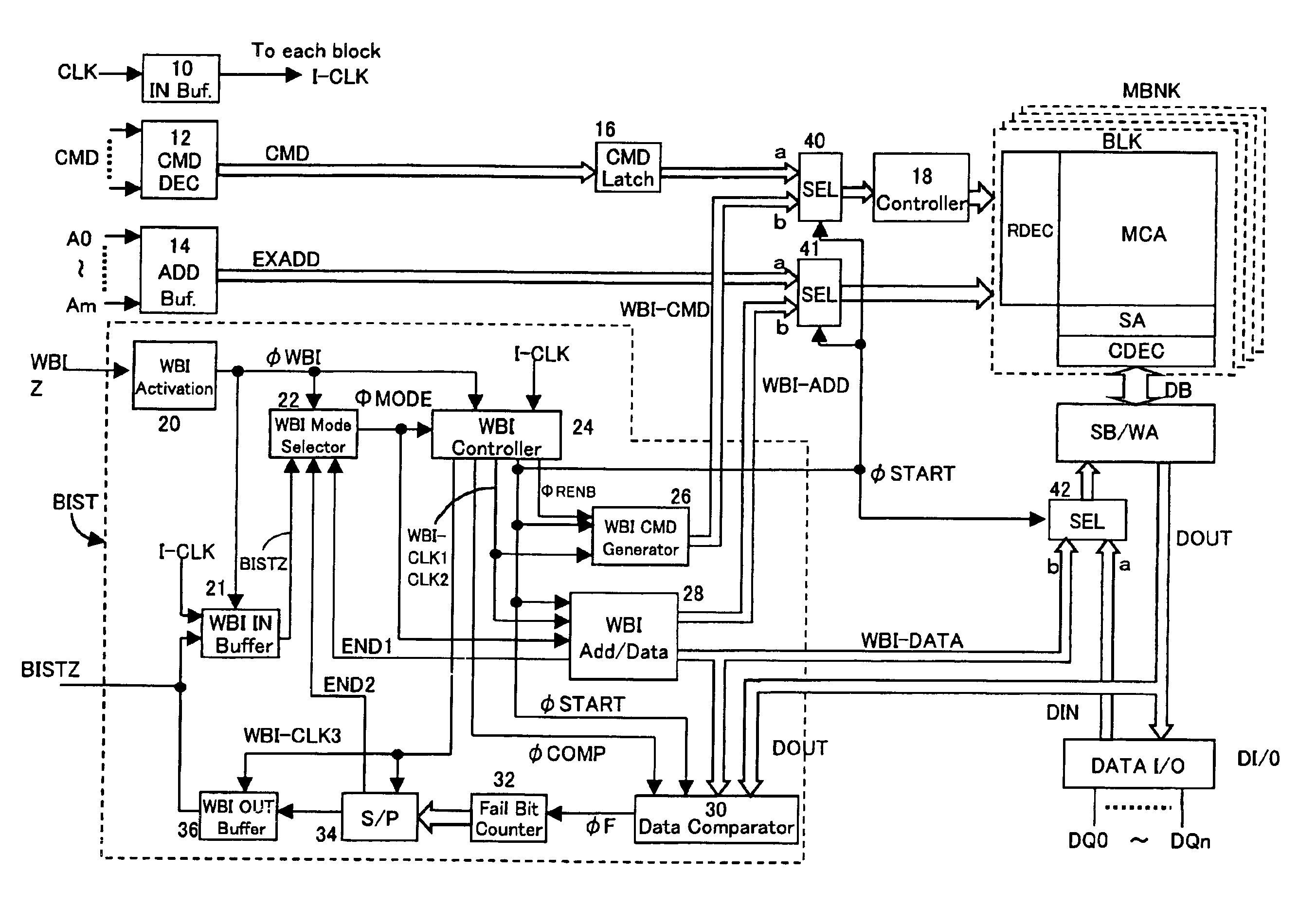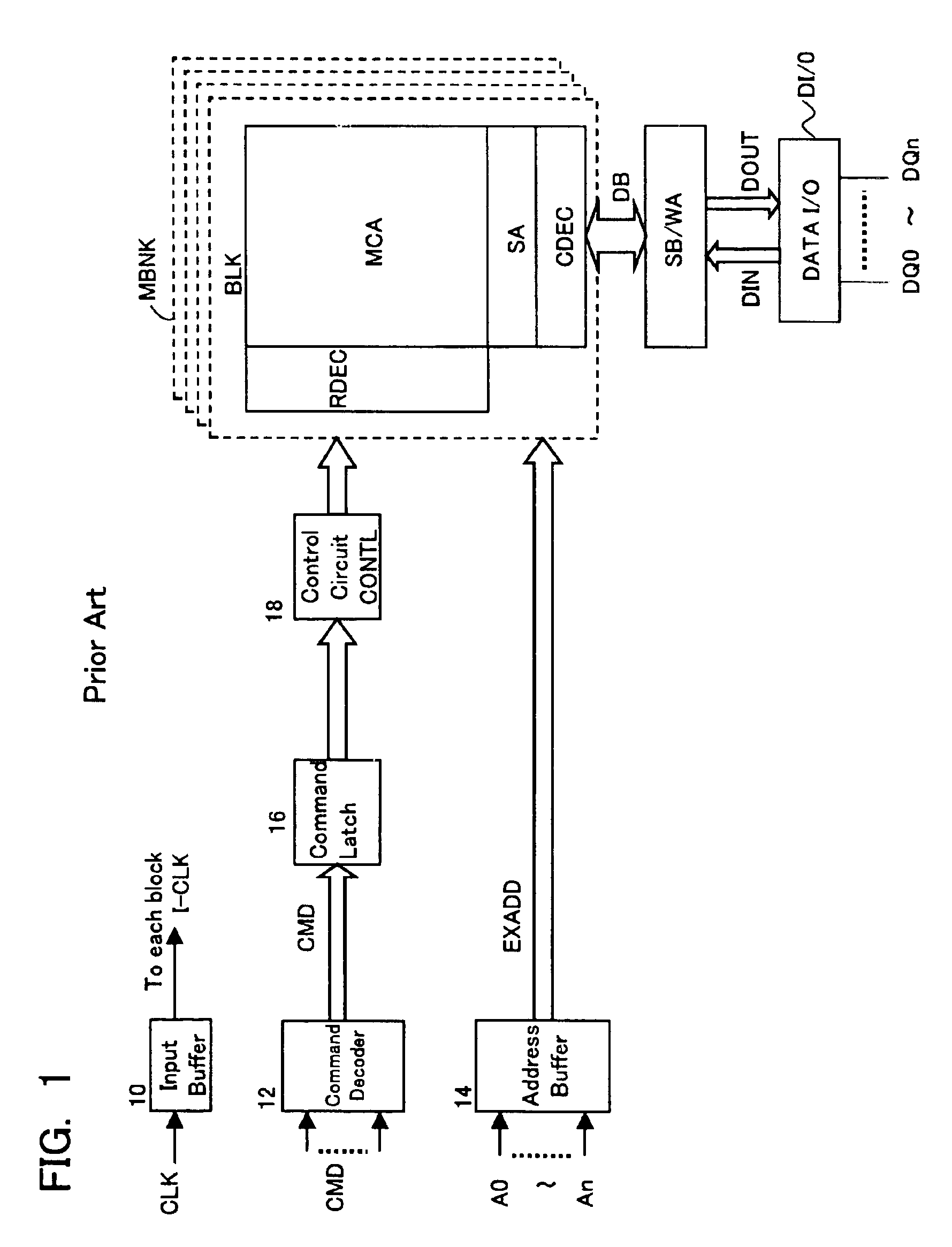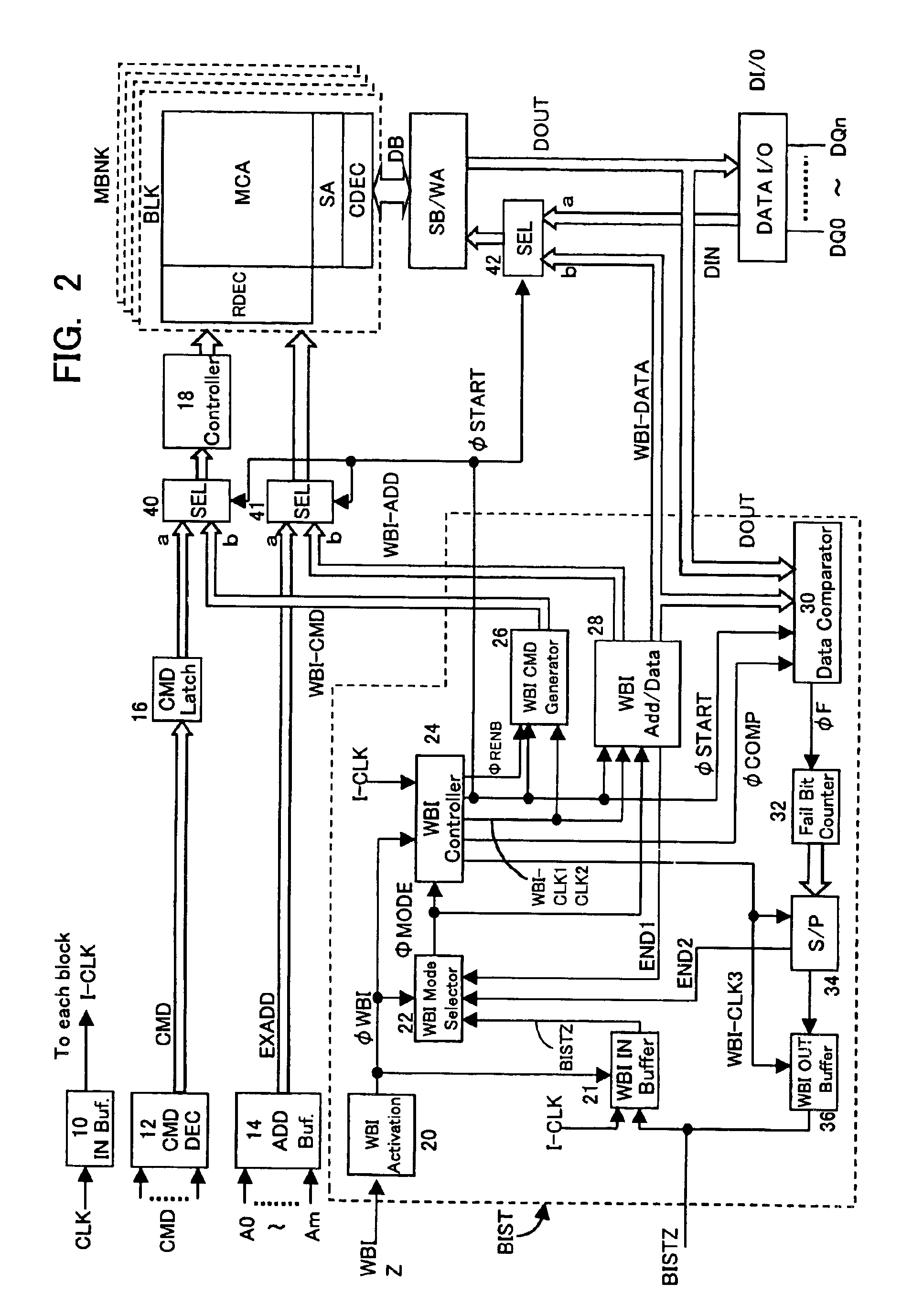Self-test circuit and memory device incorporating it
- Summary
- Abstract
- Description
- Claims
- Application Information
AI Technical Summary
Benefits of technology
Problems solved by technology
Method used
Image
Examples
second embodiment
[0114]FIG. 18 is a layout diagram of a memory device according to a second embodiment. In the second embodiment, a clock multiplier circuit 120 is provided on the output side of clock input buffer 10; in the self-test step, a clock CLK2 obtained by multiplying a comparatively slow clock I-CLK2 that is provided from outside is supplied to self-test circuit BIST and the interior of the device. Specifically, a clock CLK of for example 10 MHz is received from outside, and this is multiplied internally to 20 MHz, to operate the internal circuitry at double speed. Also, in this case, interface with the outside is effected by supplying an unmultiplied clock I-CLK 1 to the input / output circuits 21, 36. Also, multiplied clock I-CLK2 could be of three times the speed or four times the speed of external clock CLK.
[0115]The rest of the construction is the same as in the case of the first embodiment shown in FIG. 2. By the provision of a clock multiplier circuit 120 as described above, this self...
third embodiment
[0116]FIG. 19 is a layout diagram of a memory device incorporating a self-test circuit according to a third embodiment. The third embodiment is an example in which the testing can be carried out using the self-test circuit BIST also after assembly into the form of a package. To achieve this, in WBI activation circuit 20, in addition to the activation signal WBIZ in the wafer level burn-in test, a second activation signal WBIZ2 is additionally input from a test mode selection circuit 126 that selects test mode with a special command. When either of these activation signals WBIZ or WBIZ2 is in active condition, WBI activation circuit 20 detects that the self-test step is being performed and makes the internal WBI activation signal øWBI of H level.
[0117]Test mode selector circuit 126 generates the second activation signal WBIZ2 when a specific combination of external command input CMD and / or address input A0 to Am is input. Therefore, self-test circuit BIST is activated in response to ...
fourth embodiment
[0120]FIG. 20 is a layout diagram of a WBI activation circuit and WBI mode selector circuit according to a fourth embodiment. The WBI mode selector circuit in the fourth embodiment is a modification of that of FIG. 3. The WBI mode selector circuit 22 shown in FIG. 20 is provided with flip-flops 134 to 138. These flip-flops input as set / reset signal the pulse generated by pulse generating circuit 130 at the rising edge of WBI activation signal øWBI, and input as data input clock the pulse generated by pulse generating circuit 132 at the rising edge of one or other of the operation mode termination signals END1, 2.
[0121]Consequently, when the WBI activation signal øWBI becomes H level, the flip-flops 134 to 138 sequentially automatically generate test mode signals MODE1→MODE2→MODE3→MODE4→OUTPUT. By utilizing this WBI mode selector circuit, input of the mode signal BISTZ as shown in FIG. 2 or 3 is unnecessary, so the self-test can be executed in an even simpler fashion.
PUM
 Login to View More
Login to View More Abstract
Description
Claims
Application Information
 Login to View More
Login to View More - R&D
- Intellectual Property
- Life Sciences
- Materials
- Tech Scout
- Unparalleled Data Quality
- Higher Quality Content
- 60% Fewer Hallucinations
Browse by: Latest US Patents, China's latest patents, Technical Efficacy Thesaurus, Application Domain, Technology Topic, Popular Technical Reports.
© 2025 PatSnap. All rights reserved.Legal|Privacy policy|Modern Slavery Act Transparency Statement|Sitemap|About US| Contact US: help@patsnap.com



